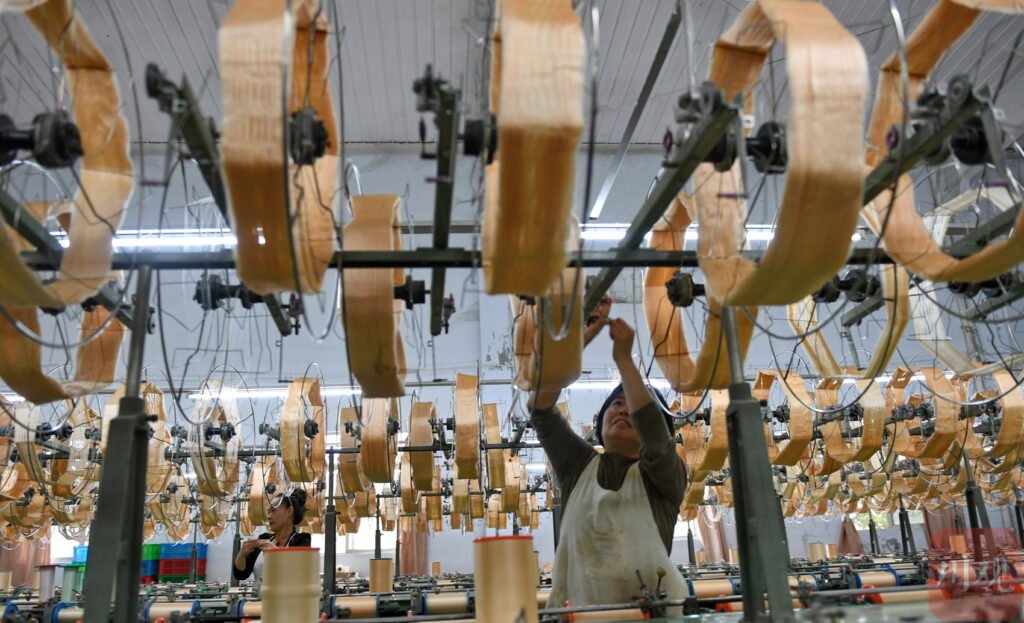
From ancient royal courts to high-end fashion houses, silk has always been synonymous with refinement. But beyond its soft luster lies one of the most fascinating and intricate manufacturing stories in the textile world. Silk isn’t made in minutes—it’s cultivated with precision, transformed with care, and woven through centuries of craftsmanship and biology. Silk is produced through a detailed process that includes raising silkworms on mulberry leaves, harvesting their cocoons, reeling silk fibers, spinning yarn, and finally weaving and finishing the fabric. The full process involves natural biology, hand-labor, and industrial precision to convert cocoon to cloth.
The journey from silkworm to fabric isn’t just about production—it’s a blend of nature, science, and tradition. In this guide, we’ll break down each stage of silk manufacturing, including real-world insights for fabric buyers and B2B importers. From the humble cocoon to high-grade silk yardage, you’ll discover how the world’s most luxurious fabric is brought to life.
What Is Silk and Why Is It Considered a Luxury Textile?

Silk is a natural protein fiber produced by silkworms during cocoon formation, known for its smooth texture, luminous sheen, and high tensile strength. It’s considered a luxury textile due to its labor-intensive production, limited global output, and premium physical and visual properties.
Why Silk Commands Global Prestige
1. Unique Properties That Set Silk Apart
| Attribute | Description |
|---|---|
| Luster | Triangular prism structure reflects light |
| Softness | Smooth fiber surface with low friction |
| Strength | Tensile strength \~300–600 MPa |
| Thermoregulation | Cool in summer, warm in winter |
| Biodegradability | 100% natural protein fiber |
Silk’s light-reflecting ability creates its signature shimmer, while its strength makes it highly durable despite its soft feel.
2. Economic and Cultural Prestige
- Silk represents less than 0.3% of global textile fiber production.
- In countries like India and China, silk has historical links to royalty, rituals, and spiritual significance.
- Real silk fetches prices of \$40–\$100/kg depending on grade, far higher than cotton or polyester.
In 2023, luxury fashion brands like Hermès and Loro Piana sourced silk yarns at \$95/kg from Zhejiang, China, citing unparalleled yarn consistency and natural luster—factors essential for haute couture.
3. Perception in B2B Market
- Used in bridalwear, accessories, bedding, and medical textiles
- Appeals to eco-conscious and premium buyers
- Often marketed as low-impact luxury when organic or ethically sourced
How Are Silkworms Raised and What Is the Role of Mulberry Leaves?
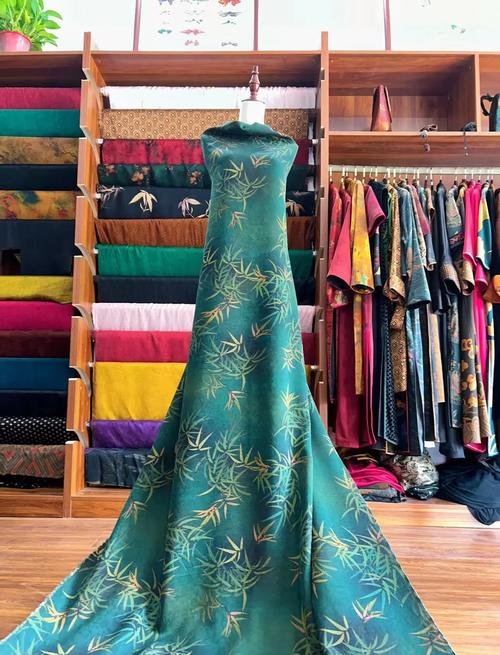
Silkworms are raised in controlled environments where they are exclusively fed mulberry leaves—their only food source. Healthy leaf supply, optimal temperature, and hygiene directly influence cocoon size, silk yield, and fiber quality.
Inside the Sericulture Process
1. Lifecycle of the Bombyx mori Silkworm
| Stage | Duration | Activity |
|---|---|---|
| Egg | \~10 days | Hatches into larva |
| Larva | 20–28 days | Consumes mulberry leaves, grows rapidly |
| Cocooning | 2–4 days | Spins cocoon with fibroin + sericin |
| Pupa | 10–14 days | Metamorphosis occurs |
Silkworms eat continuously for about three weeks and increase their body weight nearly 10,000 times before cocooning.
2. Importance of Mulberry Leaves
- Leaves are protein-rich, supplying nutrients to build high-yield cocoons.
- Quality of leaves impacts silk filament length and strength.
- One silkworm consumes 30,000–40,000 mulberry leaves during its larval stage.
| Variable | Ideal Range |
|---|---|
| Leaf moisture | 70%–85% |
| Feeding frequency | 4–6 times/day |
| Temperature range | 25°C–28°C |
| Humidity | 65%–75% |
3. Rearing Conditions for Commercial Silk Farms
- Must maintain clean trays to avoid infections.
- Use of anti-pathogen UV lamps or herbal sprays is common.
- Silkworms are moved manually during molting to avoid stress.
In 2022, a commercial farm in Guangdong increased cocoon yield by 18% after switching to an automated feeding system and introducing high-nutrient mulberry hybrids. Their silk filament length averaged 1,200 meters—well above the national average.
What Happens During the Cocoon Spinning and Harvesting Stage?
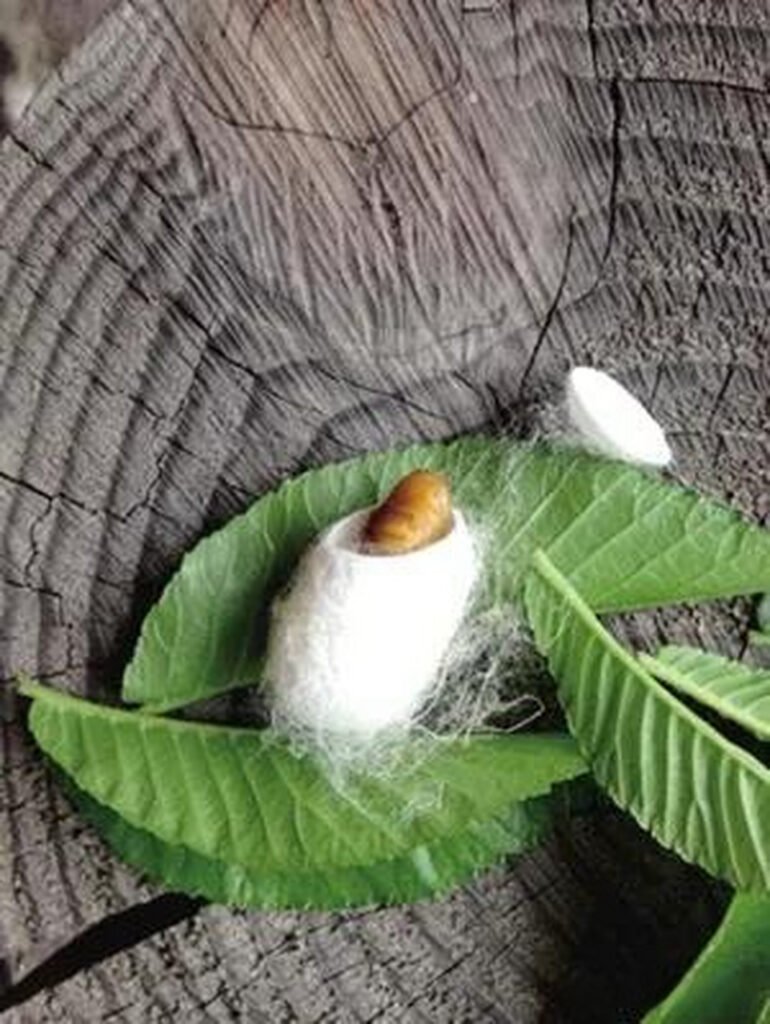
During cocoon spinning, mature silkworms secrete a continuous filament of silk—composed of fibroin and coated in sericin—to form a protective shell. These cocoons are harvested before the moth emerges, to preserve the filament’s integrity, ensuring it remains suitable for reeling.
From Worm to Cocoon – Precision Timing Matters
1. How the Spinning Process Works
- A silkworm spins approximately 1,000–1,500 meters of silk filament over 2–4 days.
- The process involves rotating its head in a figure-8 motion, layering threads around itself.
- The filament is secreted from two sericteries and hardened upon air contact.
| Component | Function |
|---|---|
| Fibroin | Structural protein, forms the core |
| Sericin | Sticky coating, holds the filament |
The cocoon hardens into a protective chamber that helps the worm transition to a moth. For silk harvesting, emergence is prevented, as moths break the continuous filament when exiting.
2. Harvesting Criteria and Methods
- Cocoons are typically harvested 6–8 days after spinning begins.
- Farmers must balance between maximizing fiber length and avoiding moth emergence.
- They are then sun-dried, steamed, or baked to kill the pupa (called “stifling”) and preserve filament quality.
| Method | Pros | Cons |
|---|---|---|
| Sun-drying | Eco-friendly, low cost | Takes longer, weather-dependent |
| Steaming | Fast, retains moisture content | Requires equipment |
| Baking | Industrial-scale, consistent | Energy-intensive |
A silk farm in Vietnam implemented a hybrid system—sun-drying followed by light oven curing—to save 22% energy while improving cocoon consistency by 15%.
3. Defective or Broken Cocoons
- Broken, pierced, or malformed cocoons are not discarded—they are used to produce spun silk by cutting and carding shorter fibers
How Are Silk Fibers Extracted from Cocoons in the Reeling Process?

Silk fibers are extracted through a process called reeling, where cocoons are soaked to soften the sericin, then unwound into continuous filaments. These filaments are reeled into skeins or bobbins and later twisted into yarn for weaving. This is a delicate process that requires temperature control, timing, and skilled labor or automation.
Reeling – The Core of Raw Silk Production
1. Softening the Cocoon
- Reeling begins with degumming or soaking cocoons in hot water (60–90°C) for 5–10 minutes.
- This softens the sericin gum while leaving the fibroin core intact.
- Soaked cocoons are gently brushed to locate the filament end.
High-end reeling operations in China often maintain precise water temperature controls to avoid filament breakage and ensure consistency across skeins.
2. Reeling Techniques: Manual vs. Automatic
| Reeling Type | Description | Use Case |
|---|---|---|
| Manual Reeling | Traditional method using hand-operated wheels | Small farms, artisanal silk |
| Multi-End Reeling | Multiple cocoons reeled simultaneously, semi-automated | Mid-scale commercial production |
| Automatic Reeling | Fully mechanized, controlled tension and temperature | High-volume, industrial-grade silk |
Each cocoon yields around 800–1,200 meters of filament; 5–10 cocoons are often combined to create one reeling thread for improved strength and weight.
3. Quality Control During Reeling
- Workers monitor uniformity in thread diameter, minimize tension breaks, and adjust twist ratios.
- Impurities like pupa fragments or debris are manually removed or filtered by machine.
Data Snapshot: Reeling Output by Method
| Method | Average Filament Length | Yield Quality Grade | Production Speed |
|---|---|---|---|
| Manual | 700–900 m | Grade B–C | Low |
| Multi-End | 1,000–1,200 m | Grade A–B | Medium |
| Automatic | 1,200+ m | Grade A (export) | High |
4. Waste Not: What Happens to Damaged Cocoons?
- Filaments too short for reeling are cut, combed, and spun into staple silk yarn.
- Known as spun silk, this material is often used in linings, upholstery, and blends.
A textile group in India reduced raw silk waste by 28% after investing in a spun silk line using rejected cocoon stock. This increased profitability per kg and added a new B2B product line with demand in the bedding sector.
Which Steps Transform Raw Silk into Weavable Yarn?
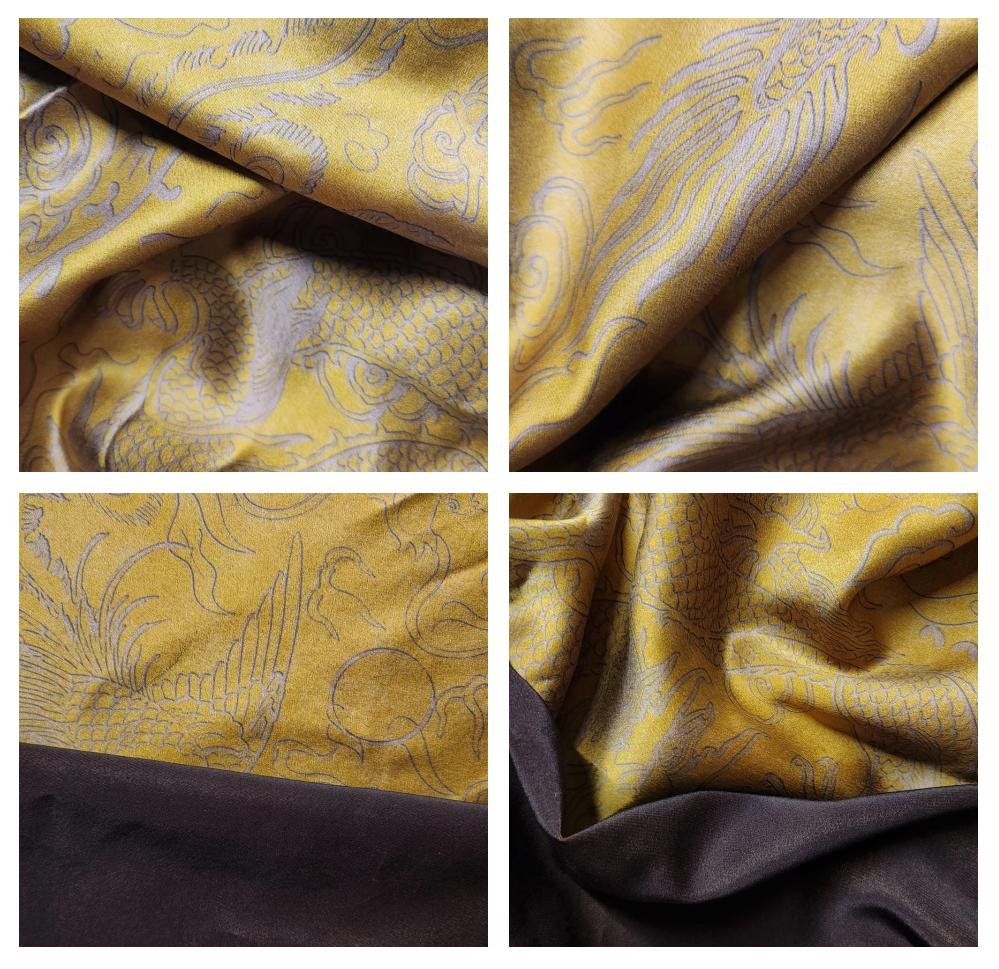
After reeling, raw silk is twisted, cleaned, and sometimes degummed further to produce yarn suitable for weaving. This process includes throwing (twisting), doubling (merging filaments), and finishing, ensuring the yarn has the desired strength, elasticity, and sheen for fabric production.
The Journey from Filament to Yarn
1. Silk Throwing: Twisting for Strength
- Throwing is the process of twisting silk filaments to form usable yarn.
- It adjusts twist level (twists per inch) to suit different applications:
- Low twist = softer handfeel (scarves, undergarments)
- High twist = stronger yarn (warp threads, outerwear)
| Yarn Type | Typical Twist (tpi) | Use Case |
|---|---|---|
| Tram | Low twist (150–200) | Weft yarn for softness |
| Organzine | High twist (350–500) | Warp yarn for durability |
| Crepe | Very high twist | Textured fabrics |
2. Doubling and Reeling Again
- Several filaments are combined (doubled) to create yarn with more body and strength.
- These yarns are then reeled into skeins or cones, ready for dyeing or weaving.
3. Degumming (Optional)
- Some yarns undergo additional degumming to remove excess sericin, improving softness and dyeability.
- Full degumming results in glossy silk; partial degumming preserves a more natural, matte look.
Weight Loss in Degumming
| Silk Type | Sericin Content Before | After Degumming | Total Weight Loss |
|---|---|---|---|
| Raw Silk (Mulberry) | \~25–30% | 0–2% | \~28% |
| Partially Degummed | \~15% | \~5–8% | \~10–12% |
4. Testing for Weavability
- Quality checks include:
- Denier measurement (fineness)
- Evenness testing
- Tensile strength
- Color fastness (if pre-dyed)
A European luxury brand reported a 20% increase in weaving efficiency after switching from inconsistent artisanal yarn to SzoneierFabrics’ high-twist organzine, which offered consistent denier across all cones and passed every mechanical test.
How Is Silk Fabric Woven, Dyed, and Finished for Use in Textiles?

Silk yarns are woven into fabric using plain, twill, or satin weaves, then dyed with either natural or reactive dyes. After dyeing, finishing treatments like softening, calendaring, or anti-static coating are applied to enhance feel, performance, and visual appeal.
The Final Fabrication Steps of Silk
1. Weaving Techniques
| Weave Type | Description | Fabric Example |
|---|---|---|
| Plain Weave | Simple over-under pattern | Habotai, organza |
| Twill Weave | Diagonal ribbed texture | Foulard, surah |
| Satin Weave | Long floats, lustrous surface | Charmeuse, duchess |
- Warp yarns: typically stronger (organzine)
- Weft yarns: typically softer (tram)
Automated air-jet looms allow for high-speed silk weaving, but artisanal handlooms are still preferred for traditional patterns like Brocade and Ikat.
2. Dyeing Processes
- Reactive dyes: Provide vibrant colors, high fastness
- Natural dyes: Sustainable and low-impact, often used in eco collections
- Discharge printing: Used to create patterns by removing dye in specific areas
| Dyeing Method | Pros | Cons |
|---|---|---|
| Reactive Dyeing | Bright, long-lasting color | Requires controlled conditions |
| Acid Dyeing | Strong penetration | May involve harsh chemicals |
| Natural Dyeing | Eco-friendly, artisan appeal | Limited color range, longer time |
3. Finishing Treatments
- Softening agents: Enhance drape and comfort
- Calendering: Presses silk for a glossy finish
- Water-repellent coatings: Used for fashion or home décor silk
- Antistatic & wrinkle-free treatments: Applied to silk for apparel use
For brands sourcing bridal or evening wear fabric, SzoneierFabrics offers customized high-sheen satin with softener pre-treatment and OEKO-TEX certified low-impact dyes, providing both comfort and compliance with EU safety standards.
Do Different Types of Silk (Mulberry, Eri, Tasar) Require Different Production Methods?

Yes, different types of silk—such as Mulberry, Eri, Tasar, and Muga—require distinct production methods due to variations in silkworm species, rearing environment, cocoon structure, and fiber properties. These differences influence reeling techniques, yarn quality, and the final fabric application.
Silk Type Comparisons and Their Processing Pathways
1. Mulberry Silk (Bombyx mori)
- Domesticated silkworm reared indoors with strict climate control.
- Requires controlled feeding of mulberry leaves.
- Yields long, continuous filaments perfect for reeling and high-end fabrics.
- Highly consistent quality and the most widely produced silk globally.
| Feature | Value |
|---|---|
| Filament Length | 800–1,500 meters |
| Color | Ivory white |
| Texture | Smooth, glossy |
| Applications | Luxury apparel, scarves, bedding |
2. Eri Silk (Samia ricini)
- Known as the “peace silk”, as cocoons are harvested after the moth emerges.
- Fibers are shorter and spun, not reeled.
- Texture is wool-like, matte, and heavier.
| Feature | Value |
|---|---|
| Filament Length | \~2–3 cm (spun only) |
| Color | Creamy to off-white |
| Texture | Soft, cottony, dense |
| Applications | Winter wear, sustainable fashion, home textiles |
Because of its open-ended cocoon structure, Eri requires carding and spinning, similar to cotton yarn production.
3. Tasar Silk (Antheraea mylitta)
- Wild silk cultivated in open forests, mainly in India.
- Cocoons are tougher and require alkaline softening before reeling.
- Has a natural golden-copper sheen and a slightly coarse texture.
| Feature | Value |
|---|---|
| Filament Length | 300–600 meters |
| Color | Coppery-gold |
| Texture | Coarse, rustic |
| Applications | Handlooms, ethnic textiles, upholstery |
4. Muga Silk (Antheraea assamensis)
- Exclusive to Assam, India.
- Extremely limited production and expensive.
- Known for its natural golden tint and long-lasting shine—does not require dyeing.
Due to different fiber properties, Mulberry silk is suited for machine weaving, while Tasar and Eri are typically handspun and handwoven, requiring specialized artisan infrastructure.
How Can B2B Buyers Ensure Quality and Ethical Sourcing in Silk Production?
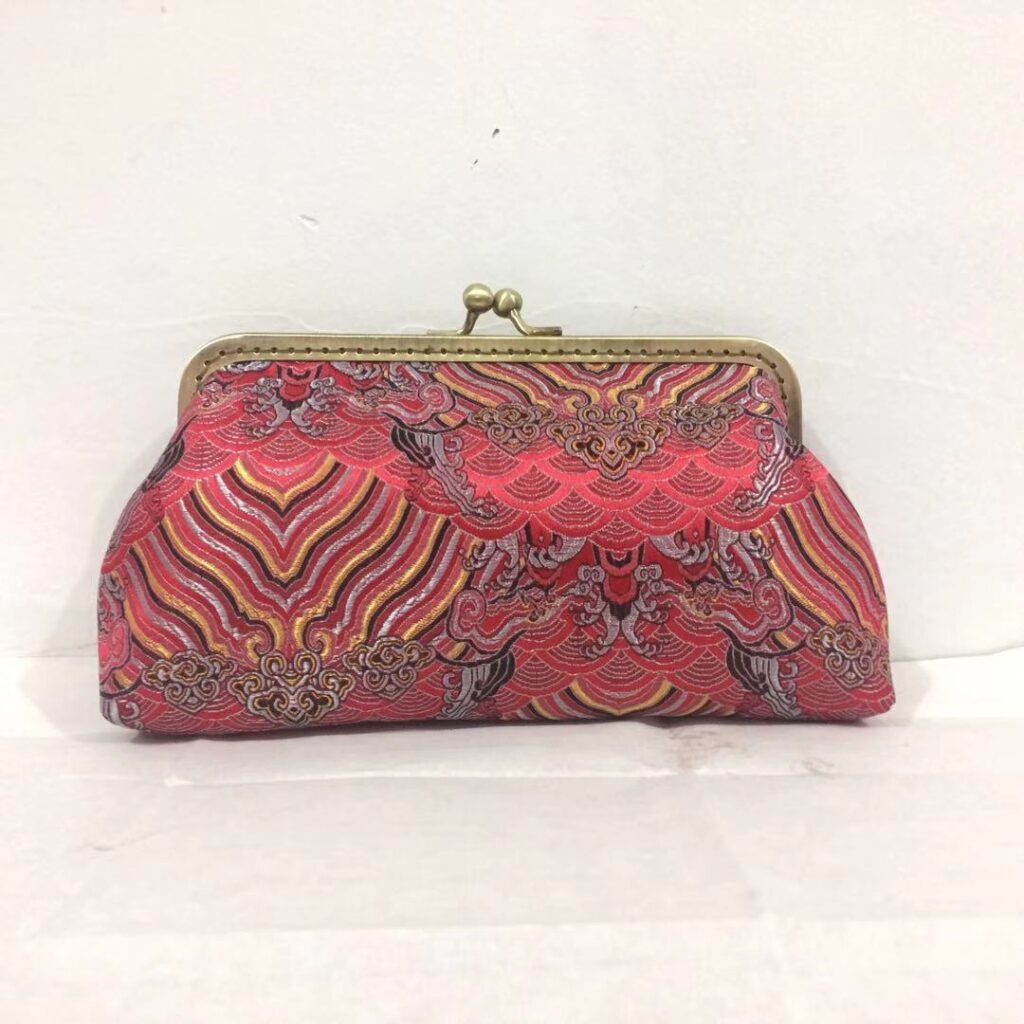
B2B buyers can ensure quality and ethical silk sourcing by partnering with certified manufacturers, verifying testing protocols, assessing traceability systems, and requesting international certifications like OEKO-TEX, ISO 9001, GOTS, and SA8000. Ethical sourcing also involves supporting non-violent sericulture and eco-friendly dyeing practices.
Building a Transparent and Compliant Silk Supply Chain
1. Certifications to Request
| Certification | Purpose |
|---|---|
| OEKO-TEX Standard 100 | Chemical-free safety assurance |
| GOTS | Organic fiber certification |
| ISO 9001 | Quality management system |
| SA8000 | Ethical labor and fair wages |
| Silk Mark (India) | Genuine silk authentication |
2. Factory Audits and Supplier Vetting
- Request factory audits or third-party inspections (SGS, Intertek).
- Check for environmental controls (wastewater treatment, energy use).
- Confirm social compliance, including worker conditions and fair trade.
3. Raw Material Traceability
- Ask for lot-level records of cocoon batches.
- Use QR code or blockchain traceability systems if available.
- Request reports on pesticide-free mulberry farming (especially for organic silk).
A U.S.-based eco-luxury brand collaborated with SzoneierFabrics for their bridal silk collection. By sourcing OEKO-TEX and GOTS-certified Mulberry silk with full traceability to farms in Zhejiang, they secured both compliance and consumer trust, increasing pre-orders by 36%.
4. Why Choose SzoneierFabrics for B2B Silk Supply?
- ✅ 18+ years of expertise in silk R\&D and fabric manufacturing
- ✅ Full support for OEKO-TEX, GOTS, ISO 9001
- ✅ Low MOQ, free samples, and custom GSM/weaving options
- ✅ Global fulfillment for fashion, upholstery, and medical sectors
- ✅ Proven track record with high-end brands and small-to-medium buyers
Your Silk Supply Partner from Cocoon to Commerce
Silk is more than a luxury—it’s a material with deep heritage, technical complexity, and global potential. Whether you’re a fashion label, interior brand, or medical innovator, understanding the silk production process from cocoon to cloth gives you a competitive edge in sourcing, storytelling, and sustainability.
At SzoneierFabrics, we’re committed to helping B2B buyers source the perfect silk fabric—authentic, high quality, and ethically made. With deep industry know-how and a flexible approach, we simplify the complexity of silk production and turn it into growth opportunities for your business.
📩 Start your custom silk journey today: 📧 Email: Info@szoneierfabrics.com 📞 Phone: (+86) 13823134897 🌐 Website: https://szoneierfabrics.com
From sampling to final bulk delivery—we’ve got your silk supply chain covered.

